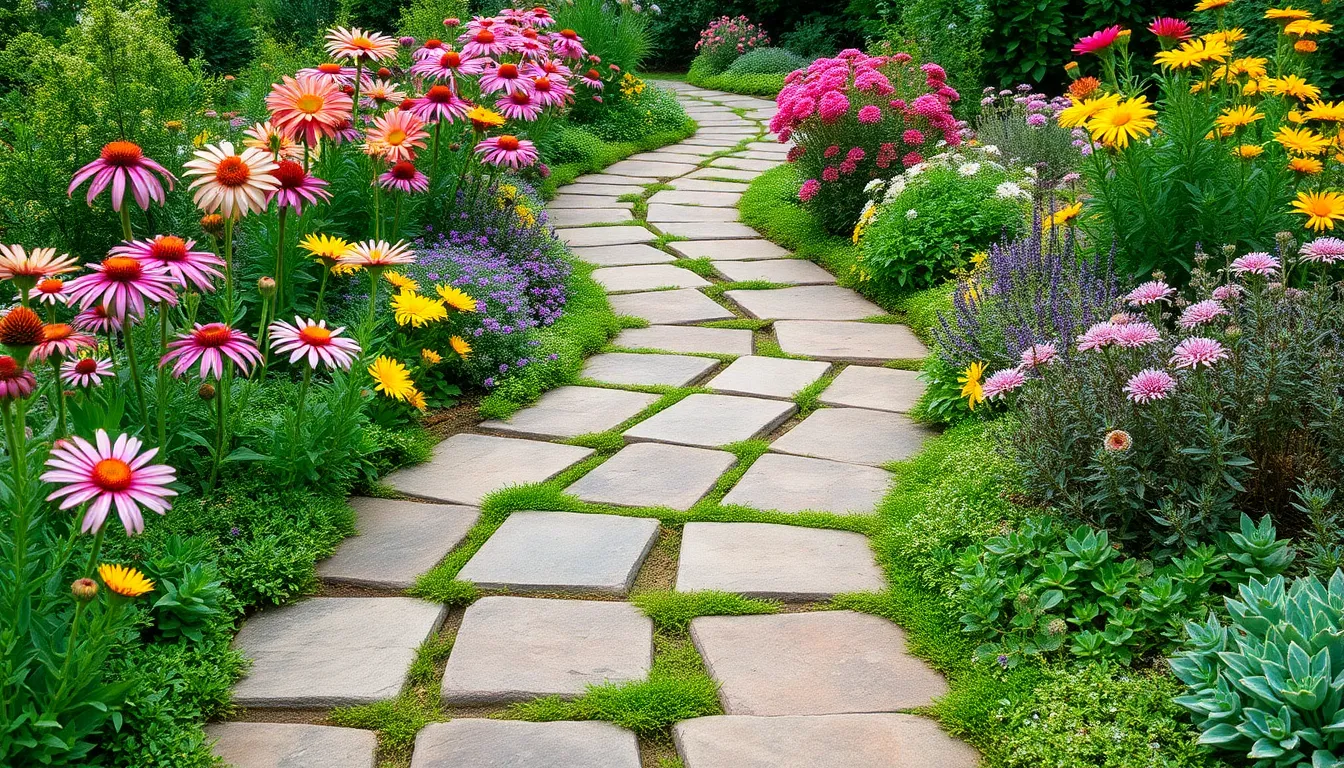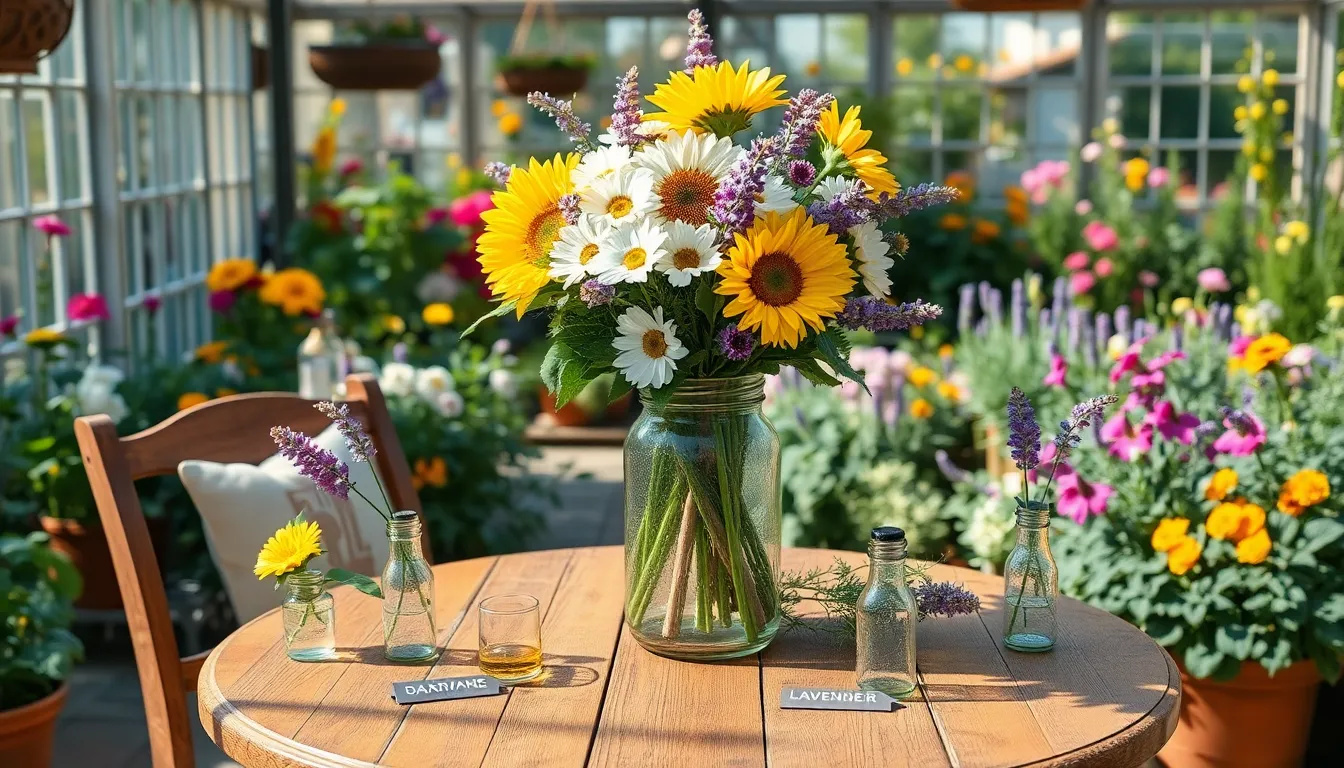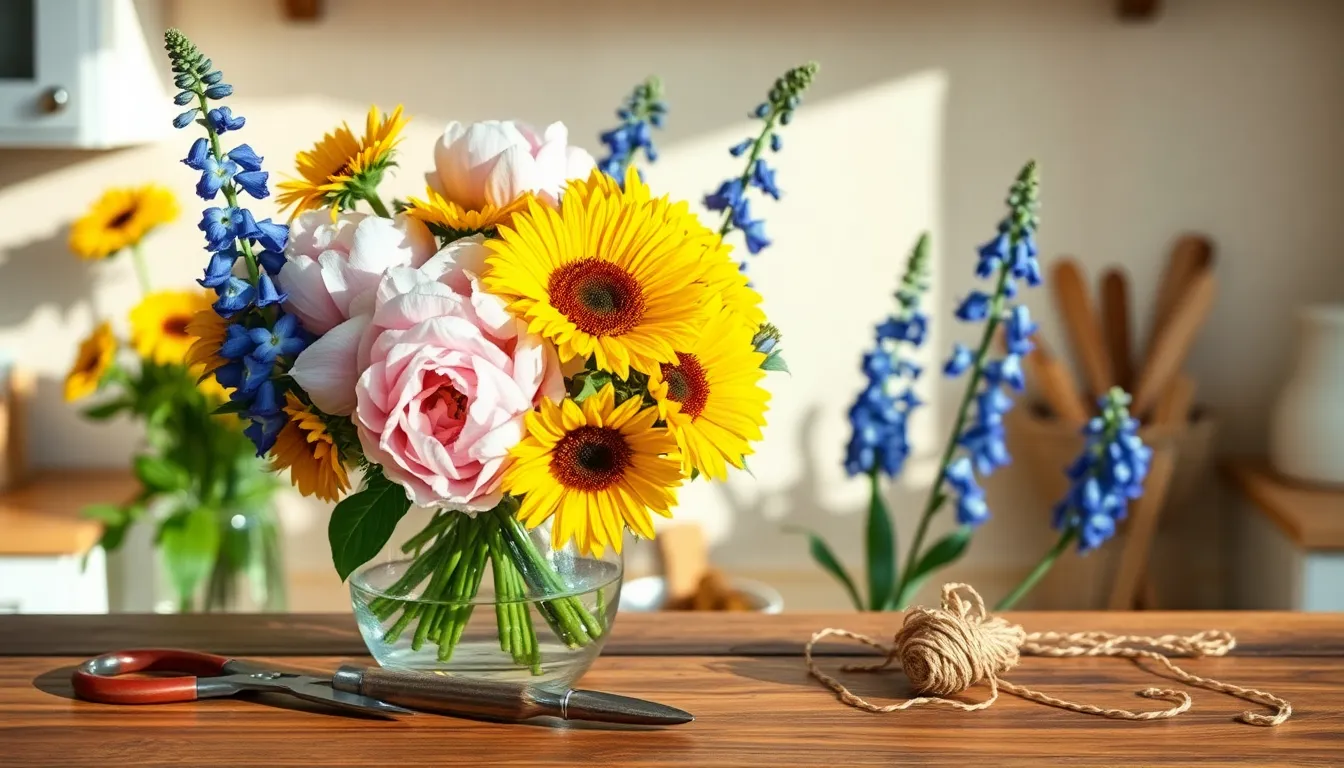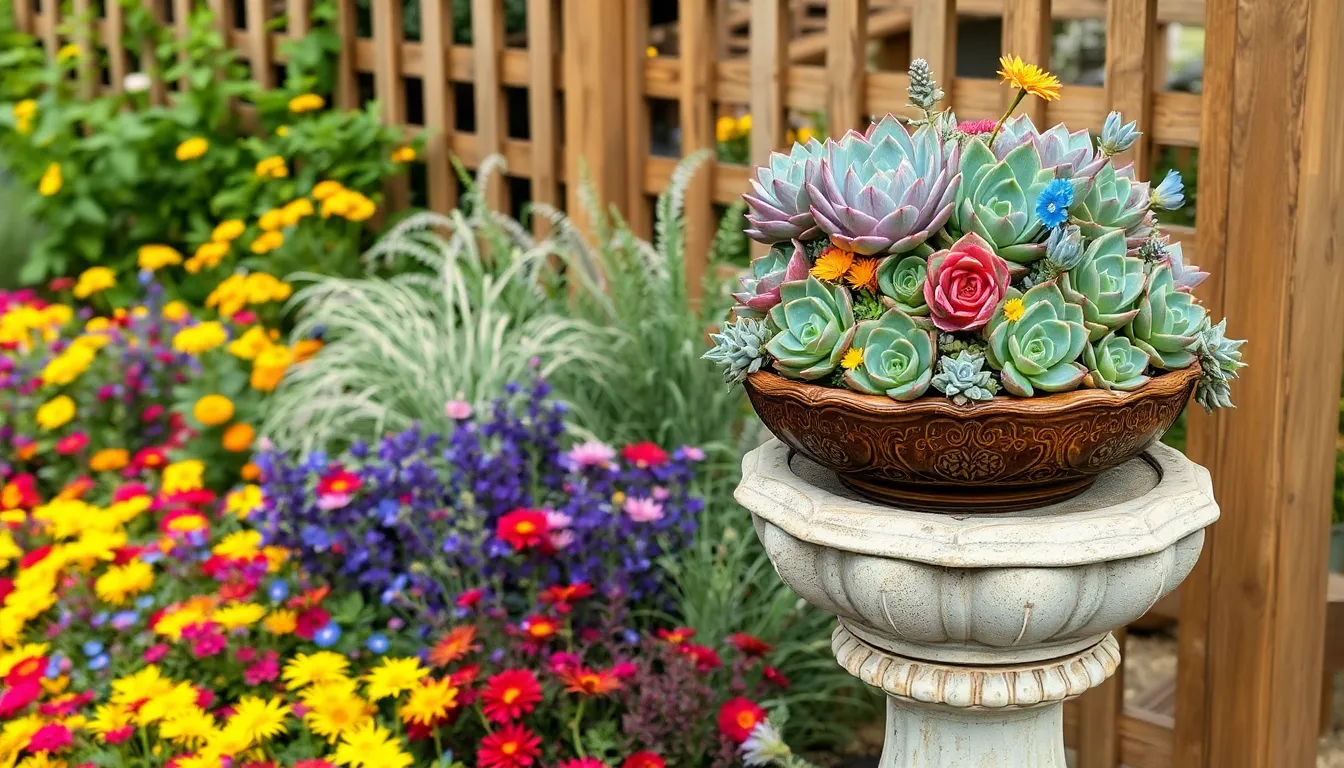There’s something truly magical about stepping into a garden and feeling drawn along a beautifully crafted path. Whether you’re a beginner just dipping your toes into the soil or a seasoned gardener with a lush landscape, creating a garden pathway can transform your outdoor space into an enchanting journey. Pathways are more than mere routes; they are the veins of your garden, guiding you through nature’s splendor and inviting you to explore every corner.
Consider the garden pathway as a canvas for your creativity, filled with possibilities to reflect your personal style. For the new gardener, this might feel like an overwhelming task, but fear not—designing a pathway is an opportunity to weave functionality with beauty, and we’re here to guide you each step of the way. Experienced gardeners will discover new ideas to elevate their existing layouts, introducing elements that bring harmony and flow to their garden.
In this article, we’ll delve into the essentials of garden pathway design, from choosing the right materials to considering the path’s shape and direction. You’ll learn practical tips on integrating pathways with your garden’s natural elements, ensuring they complement rather than compete with your plants. Whether your goal is to create a meandering trail through a wildflower meadow or a straight, formal path lined with boxwoods, you’ll find actionable advice to make your vision a reality. Let’s embark on this journey together and unlock the potential of your garden with a pathway that invites wonder and admiration.
Select the Ideal Path Location
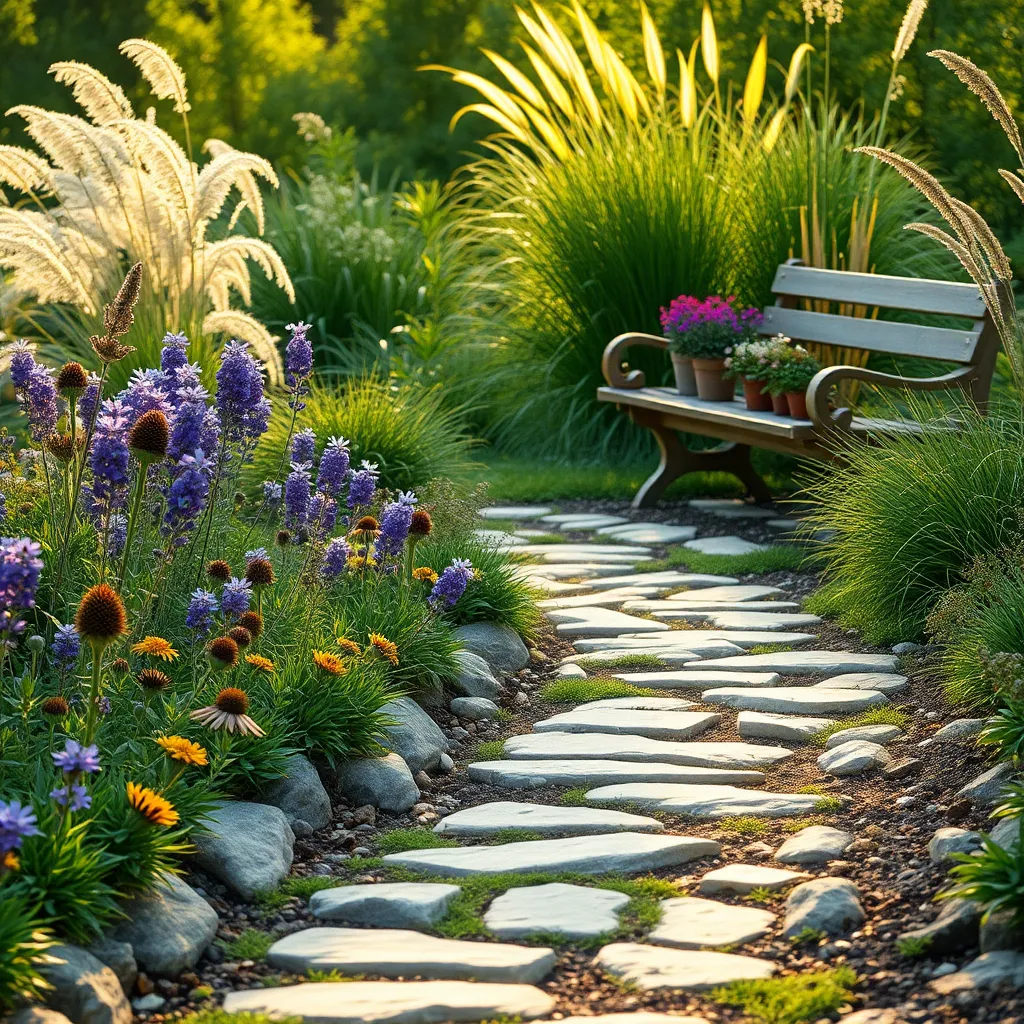
When selecting the ideal location for your garden path, consider the natural flow of movement in your garden. Observe how you and others naturally traverse the space, as this will guide you toward the most intuitive path placement.
Paths should connect key areas such as the patio, shed, or a favorite flower bed. By ensuring these connections, you create a seamless transition between different parts of your garden, enhancing both functionality and aesthetics.
It’s crucial to consider the existing landscape before deciding on a path location. Avoid areas with poor drainage or dense tree roots, as this can lead to maintenance issues and potential harm to your plants.
For beginners, a straightforward path with gentle curves can enhance the garden’s overall look without overwhelming the space. Advanced gardeners might experiment with more intricate designs, integrating different materials like gravel or stepping stones for a unique effect.
- Tip for beginners: Keep the path width between 3 to 4 feet for comfortable walking.
- Advanced tip: Consider using a mixture of hardscape and softscape elements, like borders of lavender or thyme, which add fragrance and texture.
Remember that the path’s surface should suit the local climate and soil conditions. Use materials that offer good drainage in wet areas, like gravel or permeable pavers, to ensure longevity and safety.
Choose Suitable Pathway Materials
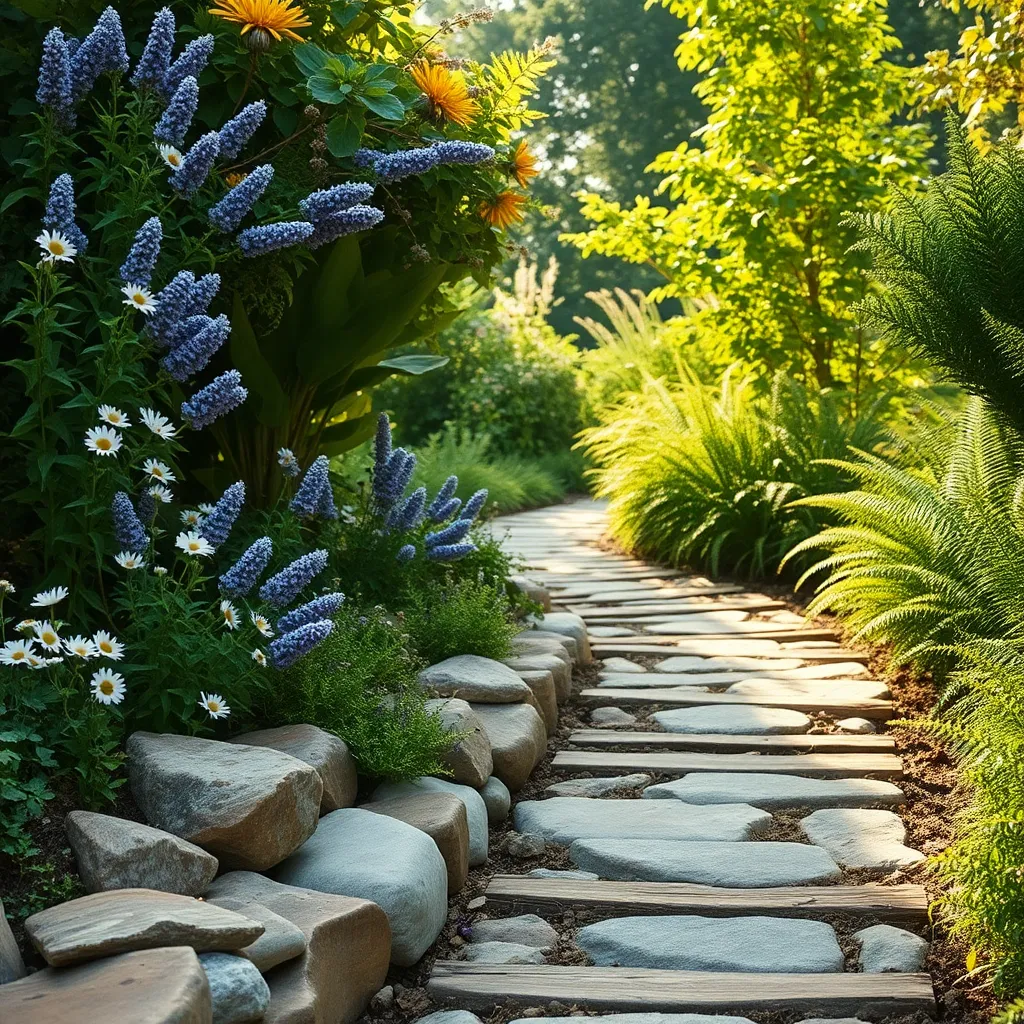
When selecting materials for your garden pathway, consider both aesthetics and functionality. Gravel, stepping stones, and brick are popular choices that can enhance the look of your garden while providing a durable surface.
Gravel is a cost-effective and versatile option for any garden pathway. It allows for natural drainage, which is beneficial for gardens with poor soil drainage or heavy rainfall.
Stepping stones are a fantastic choice for creating a whimsical or rustic look. They are easy to install and can be spaced to allow grass or groundcovers to grow between them, adding a green touch to your path.
For a more formal appearance, consider using brick pathways. Bricks are highly durable and can be laid in creative patterns, such as herringbone or basket weave, to add visual interest.
It’s crucial to prepare the ground properly before laying any pathway materials. Ensure the ground is level and compact to prevent shifting and to maintain an even surface over time.
For added stability and to prevent weed growth, lay a base of landscape fabric under your chosen pathway material. This step is especially important for gravel paths, as it will help keep the stones in place and reduce maintenance.
Finally, consider the maintenance needs of each material. Gravel may require occasional replenishing, while bricks might need realignment over time; plan for these tasks to keep your pathway looking its best.
Outline the Pathway Design
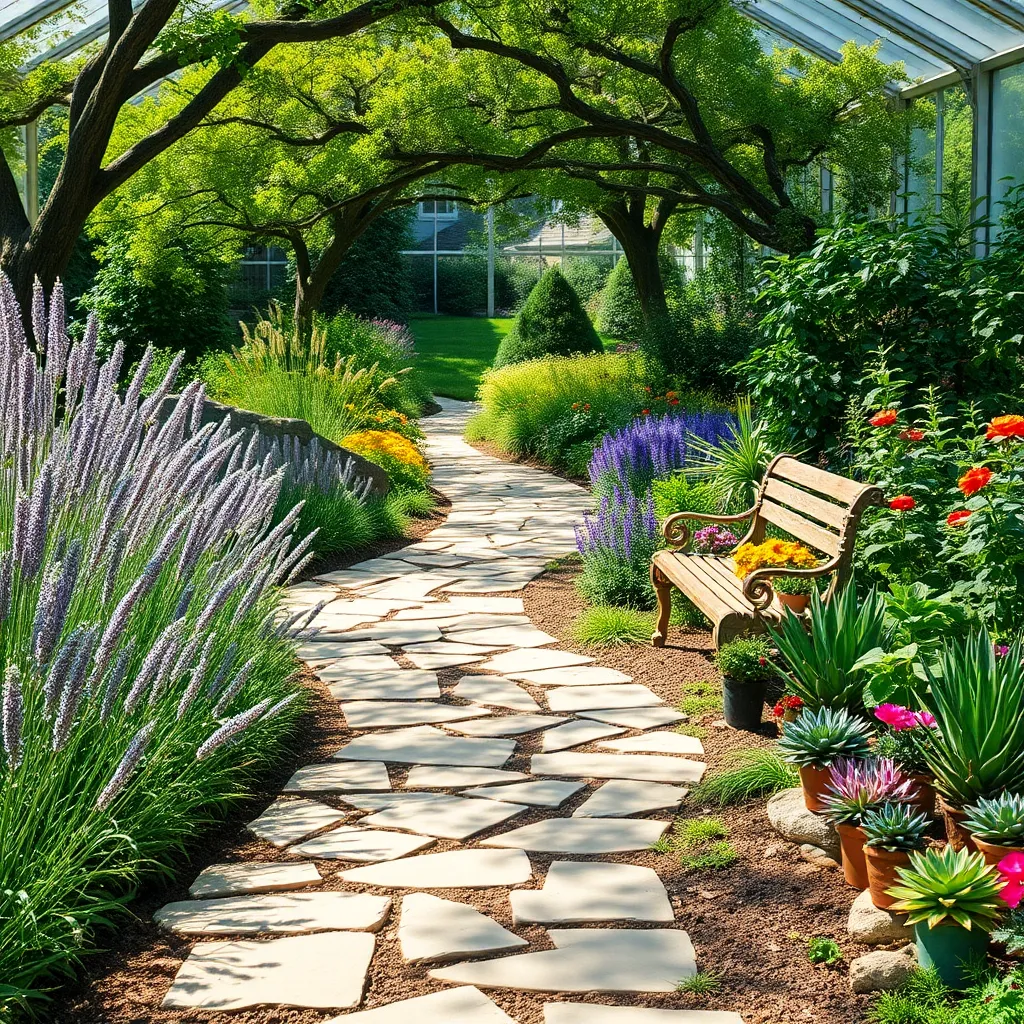
To design a beautiful garden pathway, it is essential to first consider its purpose and how it fits into the overall landscape. Whether the path is meant for frequent foot traffic or simply to enhance visual appeal, defining its use will guide the design process.
Mapping out the pathway’s route is your next step, considering both functionality and aesthetics. Start by observing the natural flow of your garden and identify key areas you want to connect, such as entrances, garden beds, or seating areas.
Use a garden hose or string to lay out the path temporarily, allowing you to visualize its course and make adjustments as needed. This step is crucial in ensuring that the pathway complements the garden’s natural contours and avoids any potential obstacles.
Prioritize gentle curves over straight lines to create a more organic and inviting look. Curved pathways not only add visual interest but can also help to slow down foot traffic, encouraging people to enjoy the surroundings.
Once satisfied with the layout, mark the edges with spray paint or stakes for a more permanent guide. This will help maintain the pathway’s intended shape during construction and ensure a professional finish.
Prepare and Level the Ground

Before you begin laying your garden pathway, it’s essential to prepare and level the ground properly. Start by removing any existing grass, weeds, or debris from the path area to ensure a clean surface. This initial step will prevent invasive plants from disrupting your pathway later.
Next, use a spade or a garden fork to dig down about 4 to 6 inches, depending on the type of material you plan to use for the path. This depth allows for a solid base layer, which is crucial for maintaining the path’s integrity over time. If you’re using heavier materials like stone or brick, consider digging slightly deeper to accommodate the additional weight.
After digging, you need to level the area. Use a garden rake to smooth out the surface, ensuring that it’s even and free of any large clumps of soil. It’s important to also check the slope of the pathway, particularly if your garden is on a gradient. A gentle slope will facilitate water drainage, preventing water pooling that can damage the pathway.
For a more stable foundation, consider adding a layer of crushed stone or gravel. Spread this material evenly across the pathway area, compacting it firmly with a tamper or garden roller. This base layer provides excellent drainage and helps prevent the pathway from shifting during freeze-thaw cycles.
Install and Secure Path Edging

To begin installing path edging, choose materials that complement your garden’s overall design, such as brick, metal, or stone. Ensure durability by selecting materials that can withstand your local climate, such as frost-resistant materials in cold regions.
Before placing the edging, outline your pathway with a garden hose or string to create a clear visual guide. This step will help you achieve a consistent and appealing design that seamlessly integrates with the rest of your garden.
For a secure installation, dig a trench along the path’s edge deep enough to hold your chosen edging materials. Aim for a trench depth that allows the edging to be level with or slightly above the path surface, ensuring safety and aesthetic appeal.
Once the trench is ready, place the edging materials snugly against the path’s edge, using a rubber mallet to gently tap them into place. This technique minimizes movement and helps maintain a straight, uniform line throughout the pathway.
To further secure the edging, backfill the trench with soil or sand, packing it tightly to hold the materials firmly in place. Regular checks and adjustments will keep your path looking sharp and enhance its longevity in the garden landscape.
Conclusion: Growing Success with These Plants
Designing a beautiful garden pathway is much like nurturing a thriving relationship—it requires thought, creativity, and ongoing care. In this article, we explored five key concepts: understanding your pathway’s purpose, choosing the right materials, incorporating natural elements, maintaining balance and flow, and adding personal touches. Just as each stone laid in your garden path contributes to its overall beauty, these concepts contribute to a strong and fulfilling relationship.
As an actionable next step, consider setting aside time this week to apply one of these concepts to your relationship. Whether it’s planning a meaningful date, finding a common interest to explore, or simply spending quality time together, taking deliberate action can fortify your bond.
Don’t forget to bookmark this article! Having these insights within easy reach will empower you to revisit and reinforce these principles as needed. Remember, the path to relationship success is ongoing and ever-evolving. By mindfully cultivating your relationship, you’ll pave the way for growth and happiness. Here’s to building a beautiful journey together, one step at a time.

